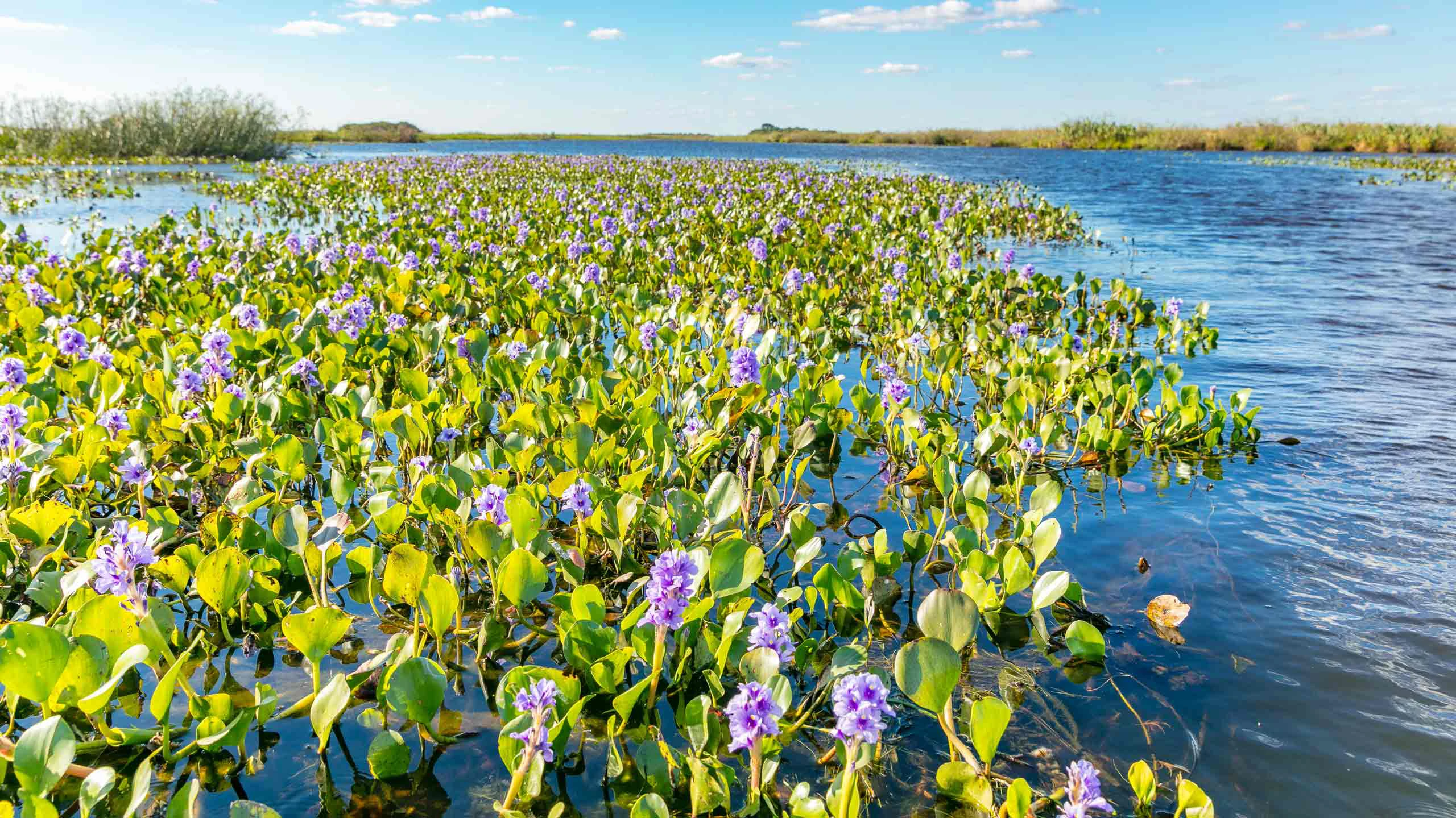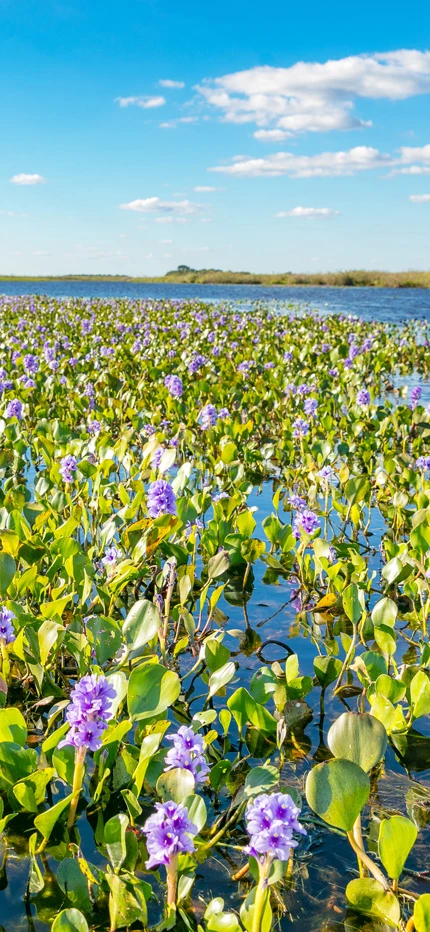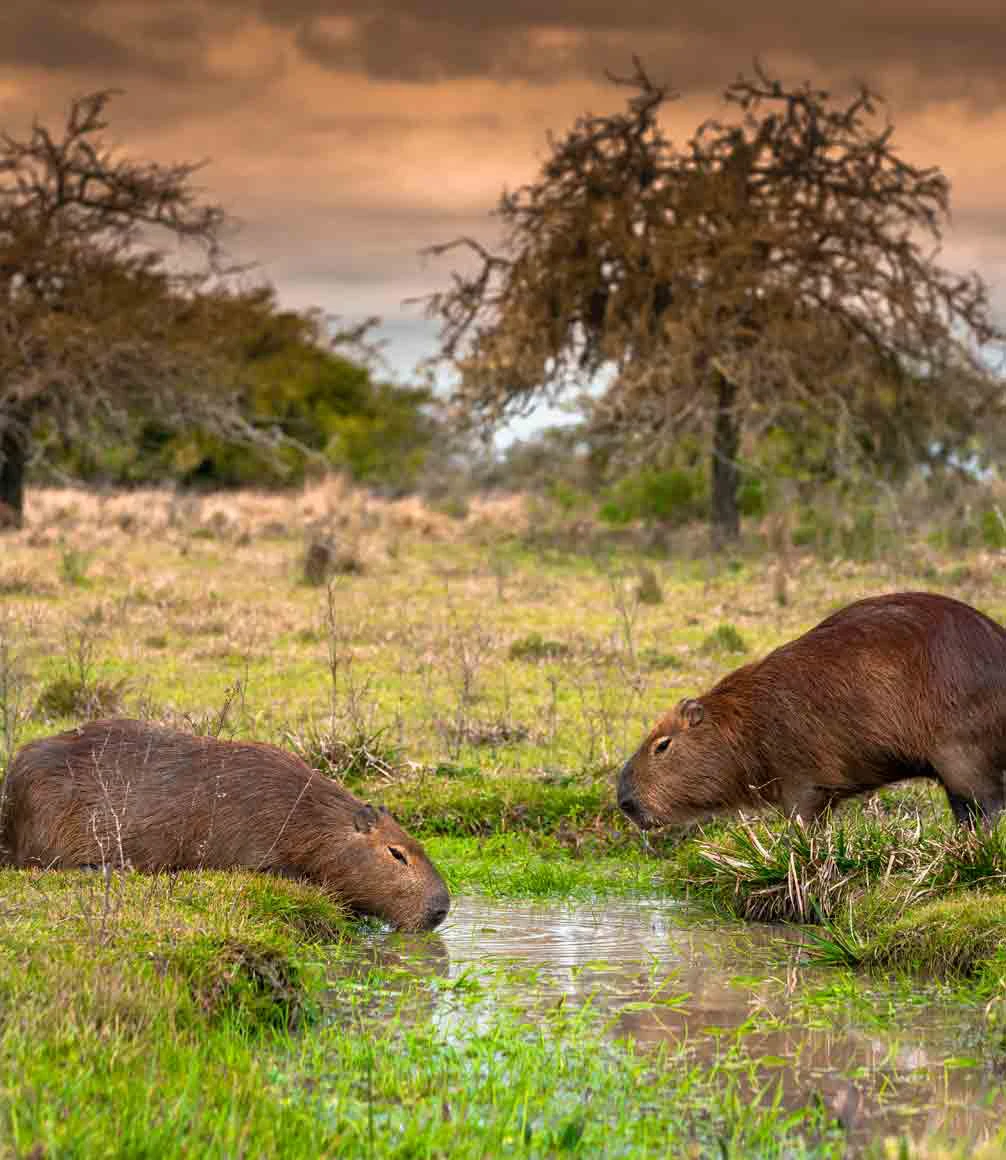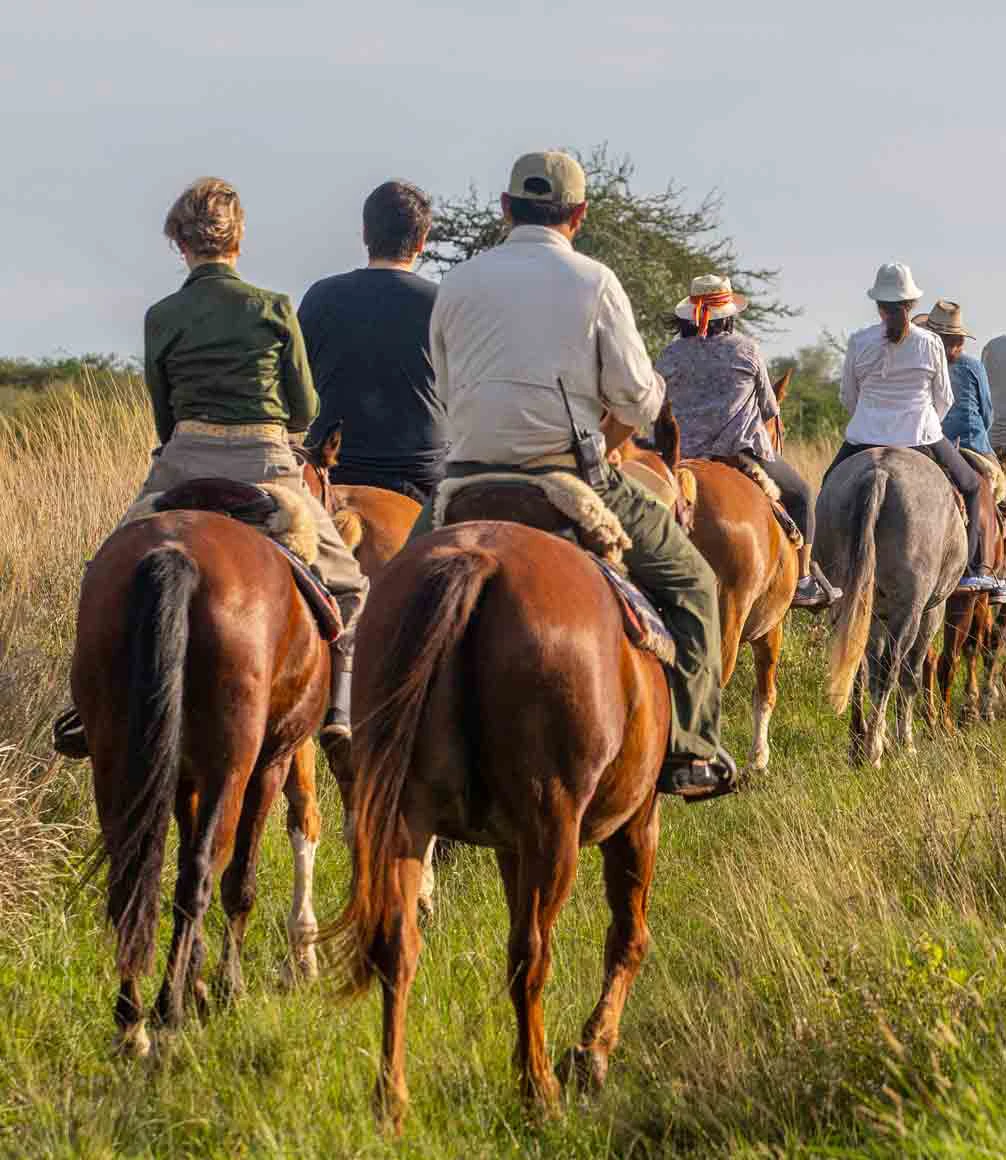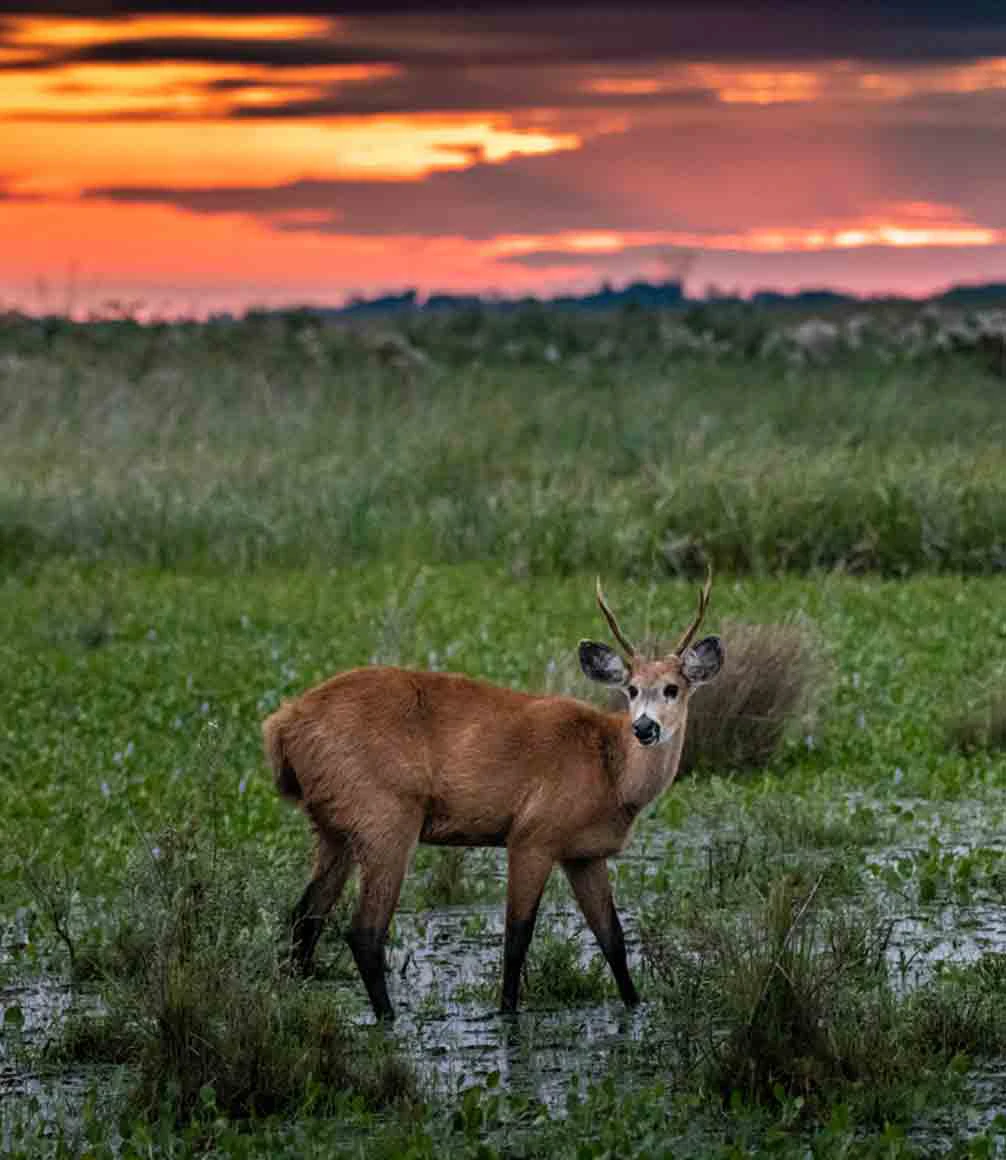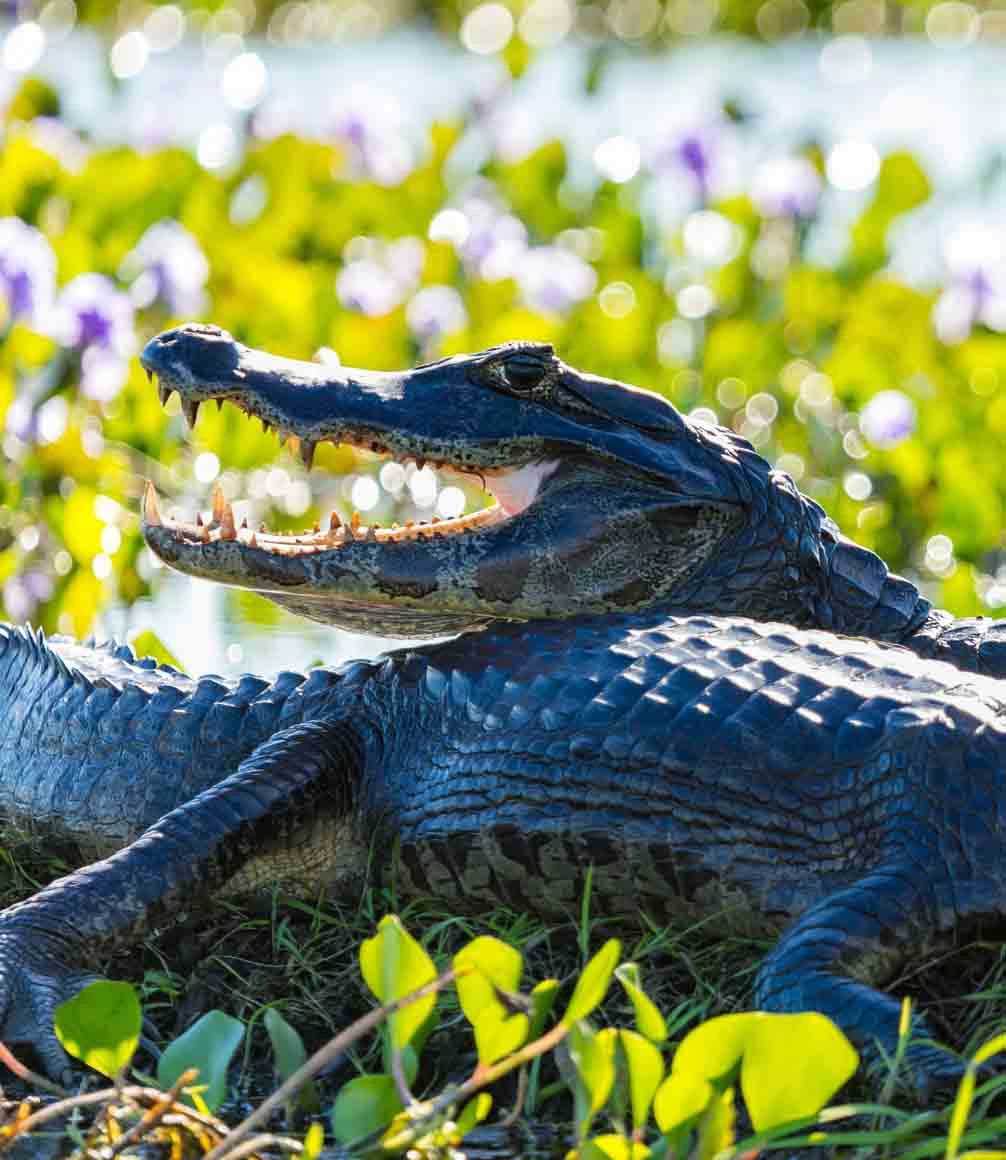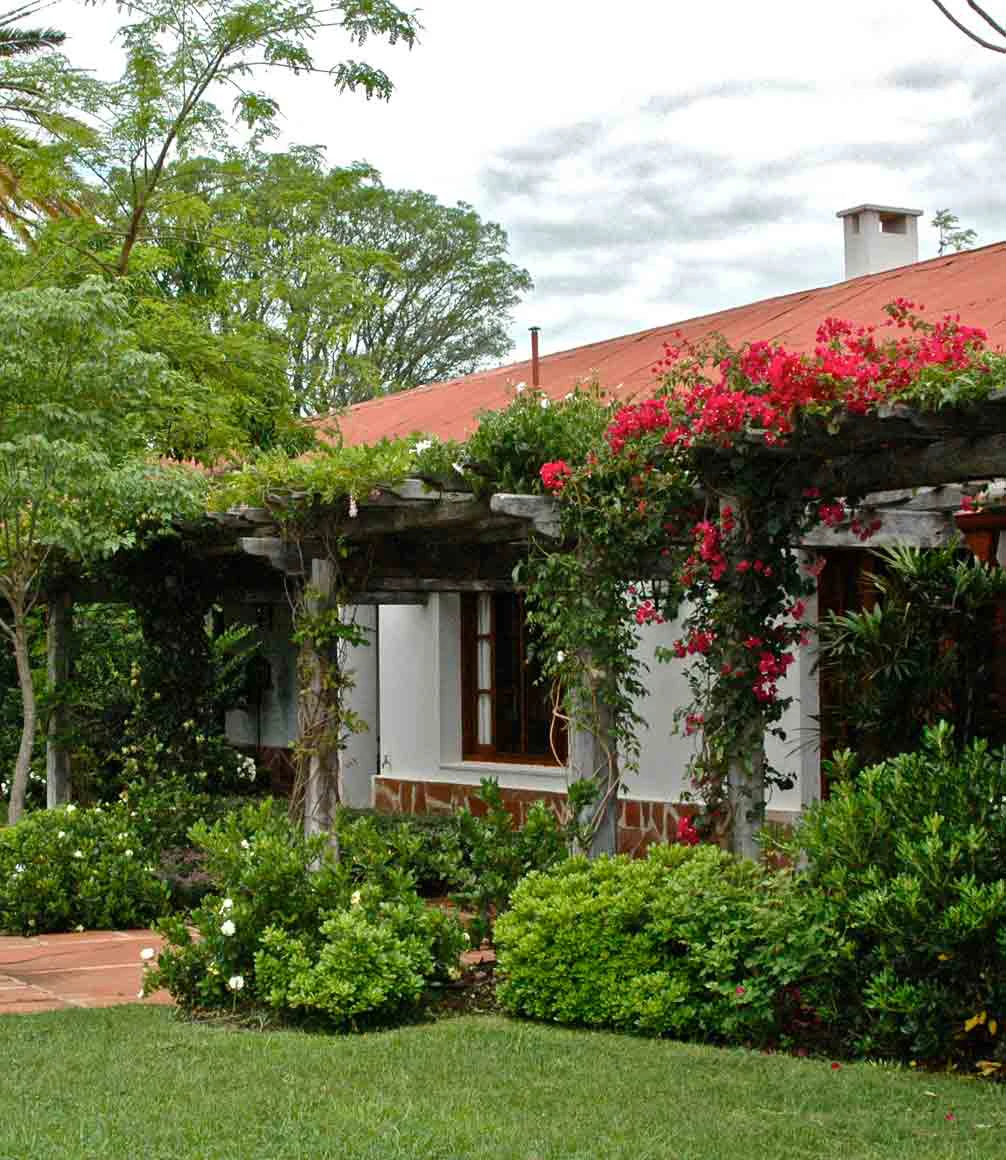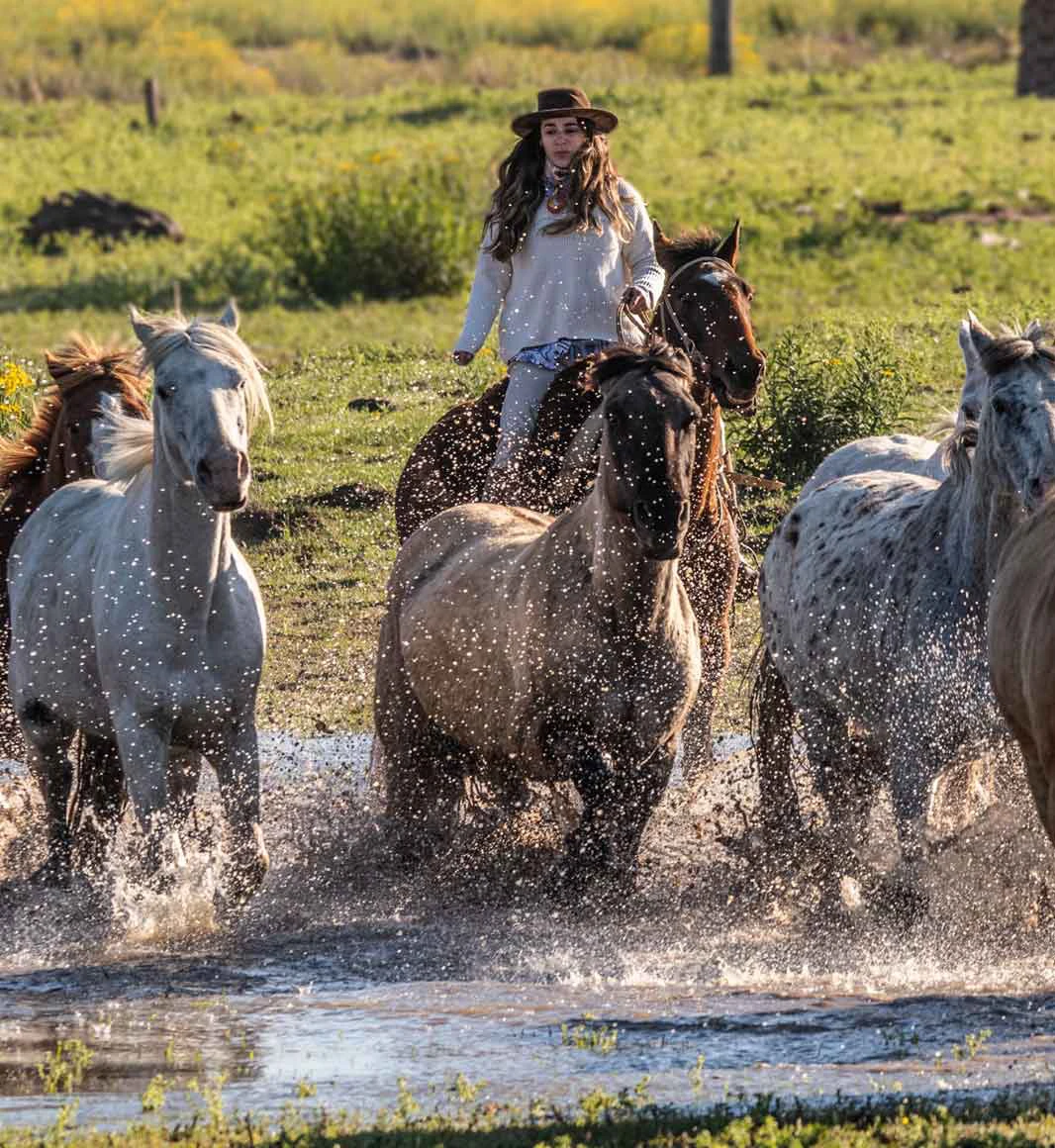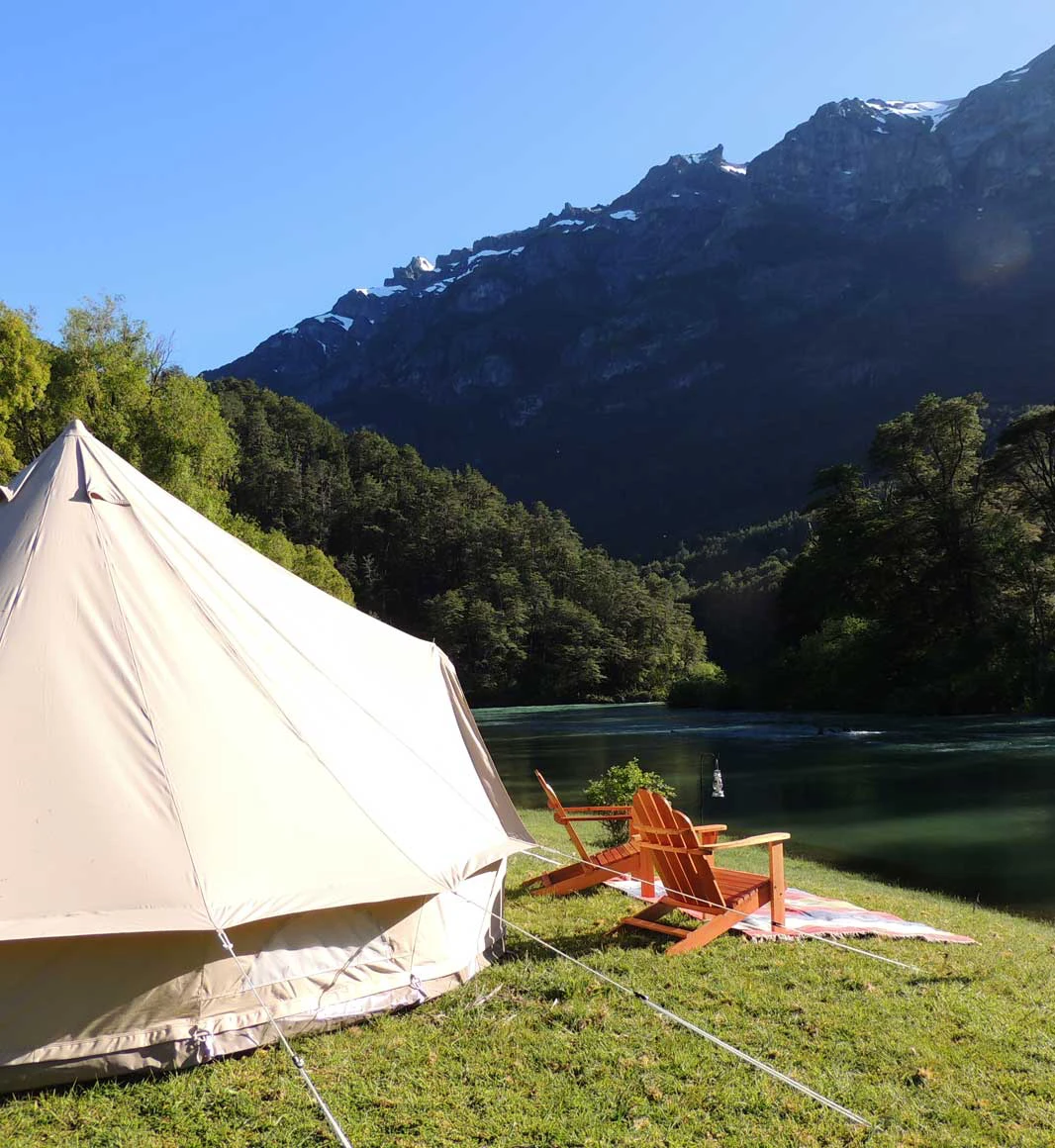In recent years, their Ibera project has had notable success in its rewilding efforts. In 2017, the first tapir was born in the Ibera after 50 years’ absence. Two populations of collared peccary have been successfully re-introduced, and self-sustaining populations of pampas deer, giant anteater, maned wolf and green-winged macaw have also been established.
Highlights of the Argentinian Ibera Wetlands
"Back at your estancia, evenings are filled with delicious gaucho barbecues, music and campfire chats with leading stakeholders in the Ibera rewilding project."
The viability of these recovering populations heavily relies however on the reintroduction of the highly threatened jaguar. As apex predator, the jaguar plays a key ecological role, and the Ibera will never function effectively as a wetland ecosystem without a healthy jaguar population. In 2011, the Jaguar Reintroduction Programme was established with the goal of breeding a generation of jaguars to be released into their natural habitat and survive independently in the wild. In June 2018 two jaguar cubs, Arami and Mbarete, were born – the first in decades in the region.
Our safaris to the Ibera generally begin by flying in a light plane to a remote private estancia in the heart of the wetlands. Over the next few days, in the very capable hands of your host, guides, chef and local gauchos, you will travel by a combination of light plane, motorboat, canoe, open-topped 4×4, horseback and on foot, exploring the Ibera’s myriad water channels and gallery forests and learning about the critical conservation work being done.
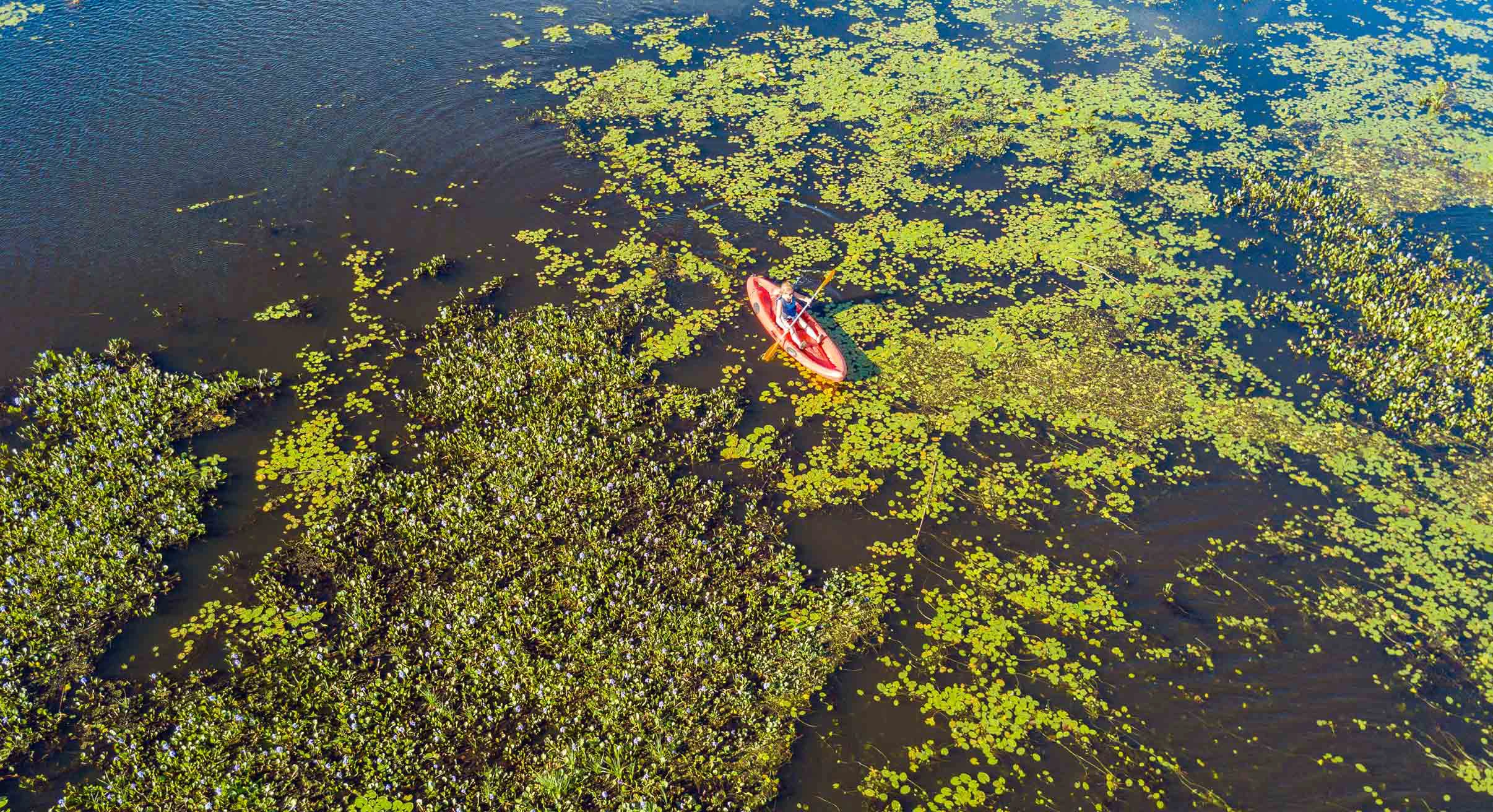
Explore the Ibera’s myriad water channels. (Photos: ©Onesixth Expeditions)
Back at your estancia, evenings are filled with delicious gaucho barbecues, music and campfire chats with leading stakeholders in the Ibera rewilding project. Combining a few days here with some time at Estancia Rincon del Socorro provides a wonderfully rounded experience of these magical wetlands.
Ready to take the road less travelled?
